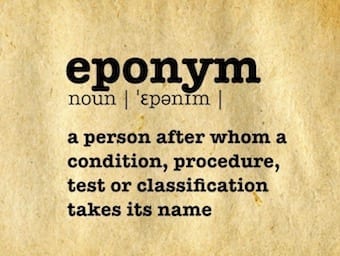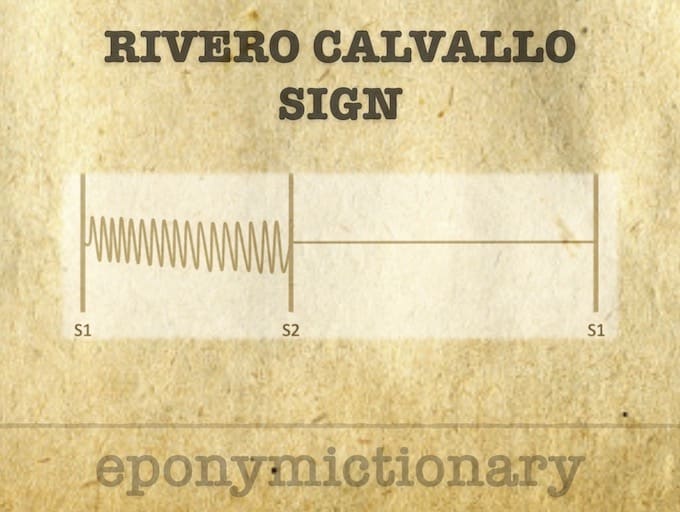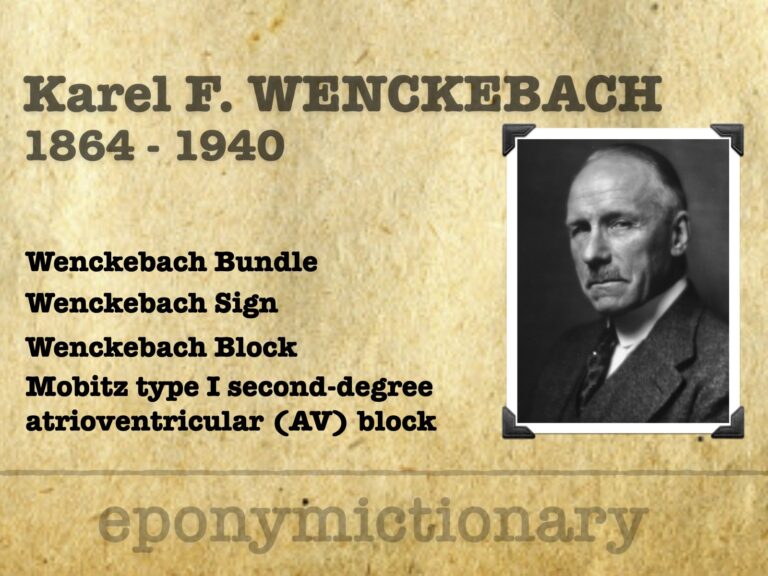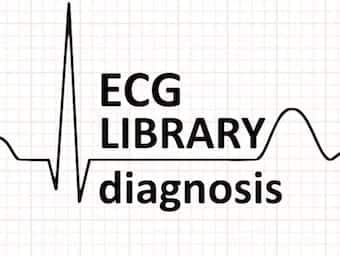
Emil Pins
Emil Elias Pins (1847 - 1913) was an Austrian physician. Pins sign (1889) of pericarditis and pericardial effusion similar to Ewart sign

Emil Elias Pins (1847 - 1913) was an Austrian physician. Pins sign (1889) of pericarditis and pericardial effusion similar to Ewart sign

Maude Elizabeth Seymour Abbott (1869 - 1940) was a Canadian physician, cardiologist and pathologist. Rokitansky-Maude Abbott syndrome (1924)

Learn how to assimilate the range of possible TEE/TOE probe manipulations in order to obtain the views that they need. Medmastery

Accentuation of the murmur of tricuspid stenosis with inspiration described by Mexican cardiologist José Manuel Rivero Carvallo (1905–1993) in 1946

José Manuel Rivero-Carvallo (1905-1993) Mexican cardiologist. Rivero Carvallo sign (1946), enhanced murmur of tricuspid regurgitation on inspiration

Karel Frederik Wenckebach (1864-1940) Dutch physician. Eponymously affiliated with Wenckebach block (Mobitz type I AV block).

Luigi Luciani (1840 – 1919) was an Italian neuroscientist. discovery referring to the phenomena as ‘Luciani periods‘ (Wenckebach AV block)

The ECG changes associated with acute pulmonary embolism may be seen in any condition that causes acute pulmonary hypertension, including hypoxia causing pulmonary hypoxic vasoconstriction.

Inflammation of the pericardium secondary to infection, localised injury or systemic disorders, producing characteristic chest pain, dyspnoea and serial ECG changes.

ECG changes and signs of myocardial ischaemia seen with non-ST-elevation acute coronary syndromes (NSTEACS). EKG LIbrary LITFL

A review of the ECG features of multifocal atrial tachycardia (MAT) with EKG examples. Life in the Fast Lane ECG Library

ST elevation in aVR indicates subendocardial ischaemia due to O2 supply/demand mismatch - causes can be cardiac and non-cardiac